eXtensions - Friday 25 July 2025
By Graham K. Rogers
![]()
A group of incoming Biomedical Engineering students on the International Program, at Mahidol Engineering, won first prize in the National Medical Innovation Idea Competition. They came up with the idea for a patch, placed on the skin, that could detect alcohol levels from the amount of acetaldehyde in the body.
Britain recognized in the 1960s that too many drunk drivers were let off at court. Legislation introduced in 1987 brought in quantitative testing. With an initial screening test on the street - the breathalyser - anyone whose test showed a positive reading was arrested. Over time society accepted the need for the legislation. It is now common for groups of friends to have a "designated driver" who does not drink, to use taxis, or even to walk rather than drink and drive.

Drinking and driving in Thailand is a continuing problem. Accident rates, particularly at weekends and during long holidays are high. Enforcement is more likely to be a visible road check. Fortunately, many in Thailand have the responsibility not to drink and drive, but guessing if one is below any legal limit, is not safe. People need a sure way to test themselves before they think about driving.
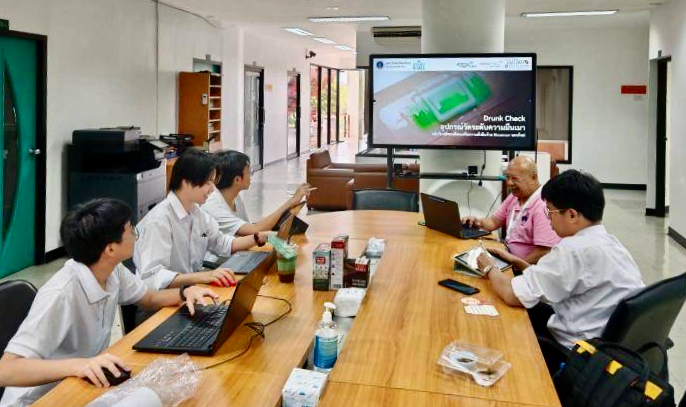
A group of incoming first-year students from the Department of Biomedical Engineering recently won first prize in the National Medical Innovation Idea Competition for their project: the Drunk Check Patch: for measuring acetaldehyde levels through the skin. The contest was organized by the National Science and Technology Development Agency (NSTDA). The students were:
Their advisors on the project were Dr. Chamras Promptmas and Dr. Benchaporn Lertanantawong.
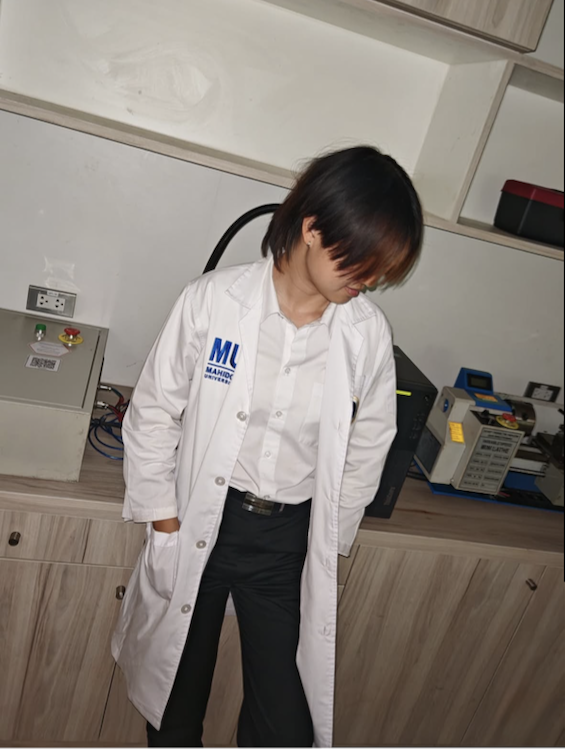
|

|

|

|
The students, who had all been accepted into the Biomedical Engineering program (International) formed a group online specifically to prepare for the contest. In subsequent meetings (live and online) they came up with a concept, and produced a workable project which has potential for further development.
They are aware that the naturally-forming substance, acetaldehyde is present in the human body and the levels are enhanced/increased, when alcohol is consumed. This sometimes causes skin color changes: the Asian Flush. The students knew that a patch (the size of a Band-Aid) with a molecular imprinted polymer (MIP) would have an electro-chemical reaction with the acetaldehyde. That, in turn, would send a signal from graphene in the MIP to a colored compound. This has an interesting feature that enhances the display when alcohol is detected.
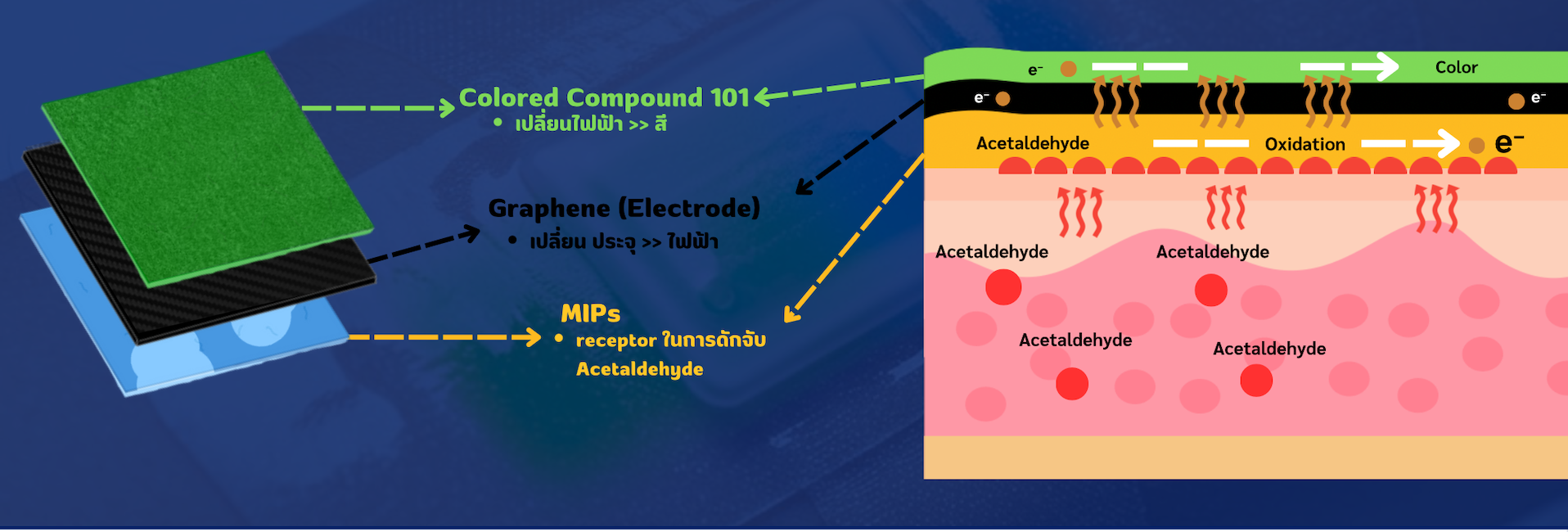
Instead of a binary color switch, if no alcohol or minimal alcohol levels are detected, the patch turns white. If enough is detected that signals driving is unsafe, it turns green. However, if there is an unusually high level of alcohol, the patch will turn blue. This is an improvement over the single color change of the yellow crystals in the first breathalyzer test kits. Although like many such home tests it can advise but not compel.
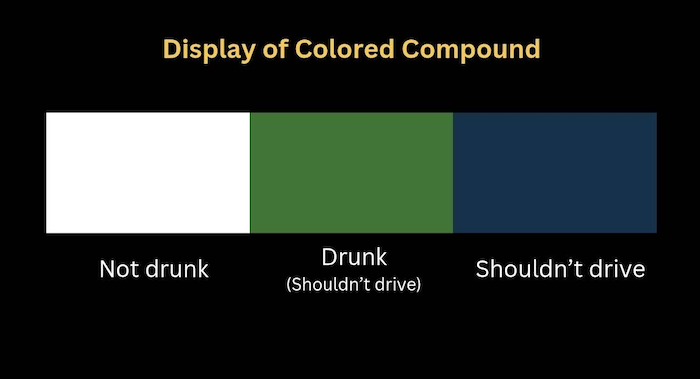
|
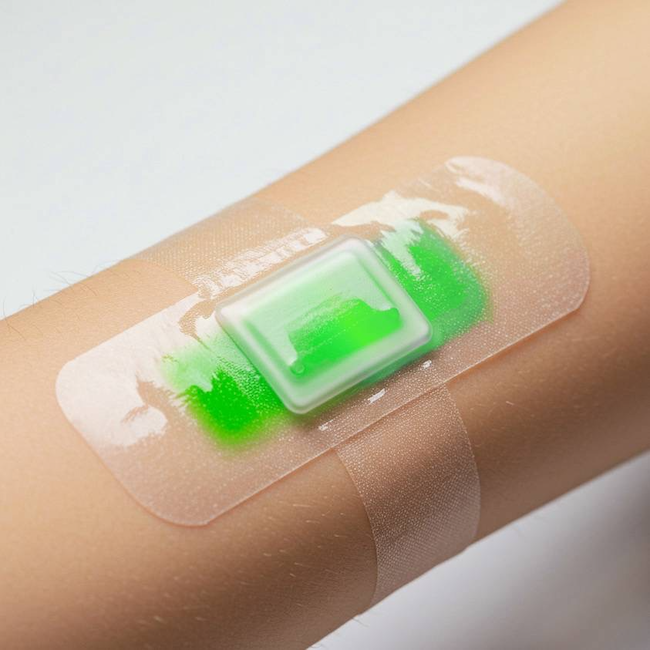
|
It is encouraging that students entering the programs at the Faculty of Engineering have the interest and abilities to want to work on such innovations. That its potential was recognized by one of the more important scientific organizations in Thailand is encouraging for the students.
This success highlights the Faculty's commitment to hands-on learning, encouraging students to create real-world solutions for healthcare challenges. It also demonstrates the emphasis Mahidol Engineering places on early innovation and research experience. This empowers students to become future leaders in medical technology and in sustainable healthcare development.
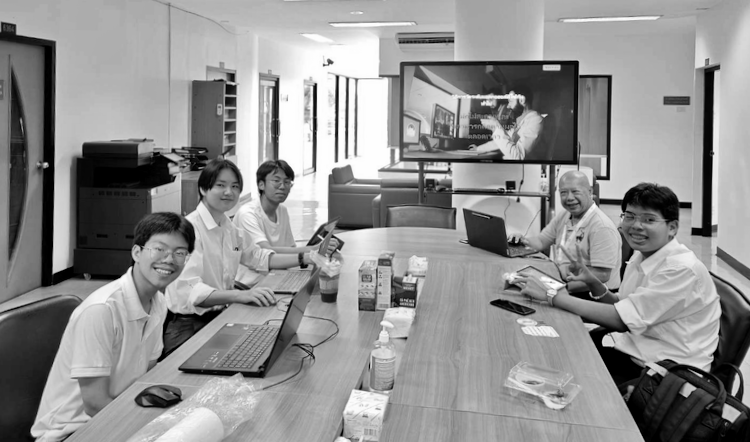
Graham K. Rogers teaches at the Faculty of Engineering, Mahidol University in Thailand. He wrote in the Bangkok Post, Database supplement on IT subjects. For the last seven years of Database he wrote a column on Apple and Macs. After 3 years writing a column in the Life supplement, he is now no longer associated with the Bangkok Post. He can be followed on X (@extensions_th). The RSS feed for the articles is http://www.extensions.in.th/ext_link.xml - copy and paste into your feed reader.

For further information, e-mail to
Back to
eXtensions
Back to
Home Page